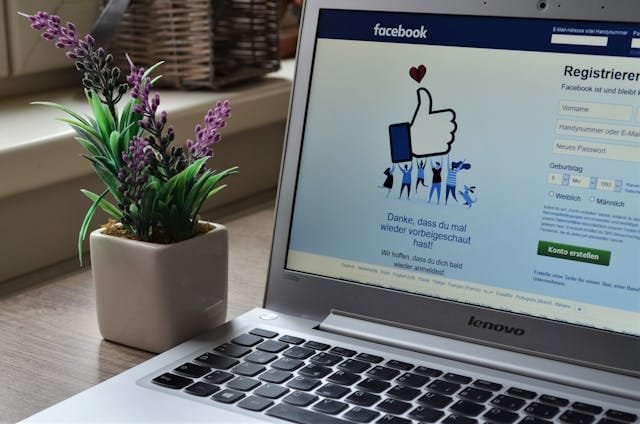In the world of B2B marketing, email campaigns are a powerhouse. They give you direct access to decision-makers, nurture leads, and drive conversions. But here’s the catch: inboxes are crowded. Everyone is vying for attention, and generic emails simply don’t cut it anymore.
To stand out, your emails need to feel personal. Personalization isn’t just about adding a recipient’s name to the subject line—it’s about tailoring every aspect of the email to resonate with the reader’s needs, interests, and pain points. Done right, it’s a game-changer for engagement, trust, and conversions.
Understanding the Power of Personalization in B2B

In B2B email marketing, personalization is not just a tactic; it’s a strategic necessity. Startup founders often face the challenge of making their brand stand out in a marketplace filled with competitors clamoring for the same audience’s attention.
Personalization is the key to cutting through the noise and creating connections that resonate deeply with decision-makers. It transforms your email from a generic marketing message into a thoughtful conversation tailored to the recipient’s unique needs and challenges.
The power of personalization in B2B lies in its ability to build trust. Unlike B2C customers, B2B buyers don’t make decisions on impulse. They need to trust that your product or service will solve their specific problems and deliver measurable value.
Personalization helps you establish that trust by showing that you’ve done your homework. When your email demonstrates an understanding of their business, industry, or role, it positions your startup as a partner, not just a vendor.
For example, instead of sending a blanket email about a product feature, imagine addressing the specific challenges faced by a procurement manager in a mid-sized manufacturing company. Referencing how your tool reduces supply chain bottlenecks and offering a case study from a similar company immediately makes the email relevant. This level of detail demonstrates that you understand their pain points and have the expertise to address them.
Personalization also drives engagement, which is critical for moving prospects through the sales funnel. B2B emails often have to navigate a complex buyer journey involving multiple stakeholders. Each recipient has different concerns and priorities, and personalization allows you to address these nuances.
A CFO might need to see cost savings and ROI projections, while an IT manager might prioritize technical compatibility. By tailoring your message to each recipient’s role, you increase the chances of engagement and buy-in.
One of the most strategic benefits of personalization is its impact on conversion rates. In B2B, the decision-making process can be long and involve multiple touchpoints. Generic messaging risks losing the recipient’s interest along the way.
Personalization, on the other hand, keeps your brand top of mind by continually reinforcing its relevance. When every interaction feels intentional and tailored, prospects are more likely to take the next step, whether that’s scheduling a demo, signing up for a webinar, or making a purchase.
Startup founders should also understand that personalization is not a one-time effort. It’s an ongoing process that evolves with your prospect’s journey. For instance, an initial email might focus on raising awareness by referencing a prospect’s industry challenges.
As they engage with your brand, follow-up emails can get progressively more specific, highlighting how your product addresses their concerns or showcasing success stories from companies like theirs. This layered approach builds a narrative that guides the prospect toward a decision.
Another often-overlooked aspect of personalization is its ability to strengthen customer retention. B2B relationships don’t end with the sale; they’re just beginning.
Personalized emails that continue to add value—whether by sharing industry insights, offering tailored solutions, or simply checking in—help maintain the relationship. For startups, this is especially critical because loyal customers not only drive recurring revenue but also become advocates who amplify your brand’s reach.
To harness the full power of personalization, startups need to think beyond surface-level tactics. Adding a recipient’s name is a start, but true personalization dives into their behaviors, preferences, and pain points.
This requires collecting and analyzing data at every touchpoint, from website visits and content downloads to email interactions and CRM activity. The insights you gain from this data allow you to craft emails that feel less like marketing and more like a tailored conversation.
Segmenting Your Audience for Precision

Segmenting your audience is the foundation of successful personalization in B2B email campaigns. For startup founders, it’s not just about dividing your email list into smaller groups—it’s about strategically organizing your prospects and customers based on the factors that drive their decision-making. Effective segmentation allows you to deliver the right message to the right person at the right time, ensuring every interaction feels intentional and relevant.
Start with firmographics, which include basic demographic information about companies. Industry, company size, location, and annual revenue are critical factors in understanding what drives a business’s priorities. For example, a small SaaS company will have vastly different needs than a large manufacturing firm.
By segmenting based on these attributes, you can tailor your messaging to address the specific challenges faced by each group. For a startup, this approach ensures that your limited resources are directed toward high-potential prospects with messaging that resonates deeply.
Go deeper by segmenting based on job roles and decision-making authority. In B2B, email campaigns often need to engage multiple stakeholders within the same organization, each with their own perspective on a purchase decision.
A C-suite executive might be focused on ROI and strategic fit, while a department manager is more interested in operational efficiency or ease of use. Understanding these nuances and segmenting your audience accordingly allows you to craft messages that speak directly to their concerns, making your emails more impactful.
Behavioral segmentation is another powerful way to increase precision. This involves grouping your audience based on how they interact with your brand. If a prospect has downloaded an eBook, attended a webinar, or clicked on multiple emails in the past, they’re demonstrating clear interest in a specific topic.
Segmenting based on these behaviors lets you follow up with emails that expand on their interest, providing deeper insights or relevant case studies. For example, if a prospect engages heavily with content about supply chain automation, your next email can introduce a webinar featuring a case study from a similar industry. This strategic approach keeps the conversation relevant and pushes them further down the sales funnel.
Another layer of segmentation is based on the stage of the buyer’s journey. A lead at the top of the funnel requires a very different email than a lead nearing conversion. Top-of-funnel prospects need educational content that introduces them to your product and its benefits, while mid-funnel leads benefit from more specific information like use cases, ROI projections, or customer testimonials.
For bottom-of-funnel prospects, urgency and proof points—such as demo invitations or free trial offers—can help close the deal. By aligning your segmentation with the buyer’s journey, you ensure that every email feels timely and relevant, increasing the likelihood of engagement.
Leveraging account-based segmentation can be especially valuable for startups focusing on high-value prospects. In account-based marketing (ABM), you treat individual companies as their own segment. This requires a granular understanding of each account’s challenges, goals, and key decision-makers.
For example, if you’re targeting a large retail chain, your emails might address their challenges with supply chain logistics and highlight how your product can streamline their processes. While this approach is resource-intensive, it delivers highly personalized campaigns that can lead to significant conversions.
Psychographic segmentation adds another dimension, focusing on values, priorities, and attitudes. This is particularly useful when targeting companies in industries undergoing disruption or transformation.
For example, businesses embracing sustainability initiatives may respond well to messaging that highlights how your solution supports environmentally friendly practices. Psychographic segmentation allows you to connect with prospects on a deeper level, creating messaging that aligns with their core values and aspirations.
Finally, consider geographic segmentation, especially if your startup serves markets with varying regional dynamics. Businesses in different locations often face unique challenges based on local regulations, economic conditions, or cultural factors. Tailoring your emails to address these regional nuances demonstrates an understanding of their specific context, which builds trust and enhances engagement.
To implement effective segmentation, use data from multiple sources. CRM systems, marketing automation tools, website analytics, and customer surveys provide valuable insights into how to group your audience. As a startup, start small and refine your segments over time. Begin with broad categories and use engagement data to uncover patterns that allow for deeper segmentation.
Crafting a Personalized Subject Line

The subject line is your gateway to engagement in any B2B email campaign. For startup founders, it’s the first—and sometimes only—chance to capture the attention of busy decision-makers.
Personalization in the subject line is more than just a tactic; it’s a strategic move that sets the tone for the entire email. A well-crafted subject line can mean the difference between an email that gets opened and one that’s ignored or deleted.
To personalize effectively, you need to think beyond simply adding the recipient’s name. While this is a good start, true personalization reflects a deep understanding of the recipient’s needs, interests, and context.
For example, instead of a generic “Hi John, check out our product,” a subject line like “John, here’s how [Company Name] can streamline your logistics” immediately signals relevance and value. The latter doesn’t just use their name—it acknowledges their pain point and hints at a solution.
Relevance is the cornerstone of personalized subject lines. For B2B emails, this means understanding the recipient’s industry, role, and challenges. A subject line like “Struggling with high churn rates?
Here’s how we can help” speaks directly to a common problem faced by many SaaS companies, making it far more likely to catch the eye of a SaaS founder or VP of Customer Success. Tailoring the subject line to align with specific industry jargon or trends can make it feel even more targeted.
Personalization also extends to timing. A well-timed subject line can leverage recent events, interactions, or behaviors to make your email stand out. If a prospect recently attended your webinar, a subject line like “Following up on our automation webinar—next steps for [Their Company Name]” creates an immediate connection. This type of timing-based personalization ensures your email feels relevant and not out of context.
Curiosity and urgency are powerful tools in crafting subject lines. A subject line like “Are inefficiencies costing [Their Company Name] thousands?” sparks curiosity while addressing a pain point, encouraging the recipient to open the email to learn more. Similarly, adding a sense of urgency can drive immediate action. “Exclusive offer for [Recipient’s Industry]—only until Friday” suggests that the opportunity is time-sensitive, prompting faster engagement.
Startup founders should also consider using data-driven personalization to make their subject lines more compelling. Incorporating specific metrics or insights relevant to the recipient’s business adds a layer of authority and relevance. For instance, “Cut IT costs by 20%—[Product Name] shows you how” provides a tangible benefit backed by data, making it hard for the recipient to ignore.
Another effective approach is referencing mutual connections or shared experiences. If your company was recently mentioned at a conference they attended or if a colleague recommended your solution, leverage that context. A subject line like “Following up on our chat at [Event Name]” or “John Smith suggested I reach out—insights for [Their Company Name]” creates an immediate sense of familiarity and trust.
Experimentation is key to mastering personalized subject lines. A/B testing allows you to compare variations and determine what resonates most with your audience. Test elements like tone, level of personalization, or use of emojis to see how different approaches impact open rates.
For instance, some industries might respond well to casual, conversational subject lines like “Let’s make your hiring process easier,” while others prefer more formal ones like “Strategies to optimize recruitment for [Their Company Name].” The insights you gain from testing can help refine your approach over time.
Length is another crucial factor. While personalized subject lines should be descriptive, they also need to be concise enough to avoid getting cut off in the inbox. Aim for 6–10 words, focusing on the most compelling aspect of your message. Mobile optimization is particularly important here, as many professionals check their email on the go. A short, impactful subject line ensures your message is fully visible, even on smaller screens.
Finally, the tone of your subject line should reflect your brand while resonating with your audience. For B2B emails, a professional yet approachable tone works best. You want to communicate authority and value without sounding overly formal or detached.
A subject line like “[Recipient’s Industry] trends you need to know in 2024” strikes a balance by offering helpful content in a way that feels both professional and engaging.
Using Dynamic Content to Speak Directly to Each Recipient

Dynamic content is a game-changer for B2B email campaigns, allowing you to deliver highly personalized and relevant messages without the need to manually customize each email. For startup founders, this capability is particularly valuable because it maximizes the impact of your campaigns while conserving time and resources.
Dynamic content uses data to automatically tailor elements of your email based on the recipient’s attributes, behaviors, or stage in the buyer’s journey. When used strategically, it transforms generic outreach into conversations that feel bespoke and meaningful.
To start, dynamic content requires a deep understanding of your audience and the ability to leverage data effectively. Begin by categorizing recipients based on key factors like industry, job title, or past interactions with your brand. For example, if your audience spans multiple sectors, you can create dynamic sections within your email that display different case studies or benefits based on the recipient’s industry.
A prospect in healthcare might see content about improving patient outcomes, while someone in retail sees insights on supply chain optimization. This level of personalization ensures that your email speaks directly to the recipient’s context, increasing the likelihood of engagement.
Dynamic content isn’t limited to text; it can also include visuals, offers, and even call-to-action buttons. For example, you can create dynamic banners that reflect the recipient’s location or company name, adding a layer of personalization that grabs attention.
Similarly, a call-to-action button that aligns with their specific stage in the buyer’s journey—such as “Download the Whitepaper” for top-of-funnel leads or “Schedule a Demo” for prospects nearing conversion—creates a seamless experience that feels tailored to their needs.

Behavioral data is a powerful driver of dynamic content. By tracking how recipients interact with your website, emails, or other marketing assets, you can serve content that aligns with their demonstrated interests.
If a prospect has recently visited your pricing page, your next email might feature a dynamic section offering a free consultation or a tailored ROI calculator. This approach not only increases relevance but also capitalizes on moments of heightened interest when the prospect is more likely to engage.
For startups, the scalability of dynamic content is a major advantage. Instead of crafting dozens of individual emails, you can design a single email template with dynamic placeholders that adjust automatically. For example, a single campaign might use dynamic content to display different testimonials, benefits, or product features based on the recipient’s profile. This allows you to deliver a highly personalized experience at scale, even with a lean team.
Dynamic content can also be used to re-engage inactive leads or nurture existing ones. For example, an email to a dormant lead might dynamically populate with content reflecting their past interactions, such as “We noticed you downloaded our guide on automation last month. Here’s a follow-up case study we think you’ll find valuable.” This approach demonstrates that you’re paying attention to their journey, reinforcing trust and encouraging them to re-engage.
Integrating dynamic content into your email campaigns requires robust tools and data infrastructure. Platforms like HubSpot, Marketo, or Salesforce allow you to pull data from your CRM, website analytics, and marketing automation systems to power dynamic content.
The key is ensuring that your data is clean, accurate, and up to date. Even the most sophisticated dynamic content strategy will fall flat if it’s based on outdated or incorrect information. Regularly audit your data to ensure its reliability and optimize your segmentation strategies accordingly.
Testing is critical to the success of dynamic content. While personalization often improves engagement, the effectiveness of specific dynamic elements can vary based on your audience and goals. Conduct A/B tests to compare different variations of dynamic content, such as using testimonials versus case studies or different types of offers. The insights you gain from these tests will help you refine your approach and identify the combinations that drive the best results.
The strategic use of dynamic content also enhances your brand’s professionalism. When recipients see emails that feel directly relevant to their needs and interests, it creates a perception of your startup as attentive, detail-oriented, and customer-focused. This builds trust and strengthens your position as a credible solution provider.

Conclusion
Personalization in B2B email campaigns is no longer a nice-to-have—it’s an essential strategy for driving engagement, building trust, and nurturing long-term relationships. For startup founders, it represents a critical opportunity to stand out in crowded inboxes and connect with prospects on a deeper level.
By understanding your audience, leveraging segmentation, crafting compelling subject lines, and utilizing dynamic content, you can deliver emails that feel relevant, thoughtful, and actionable.





















